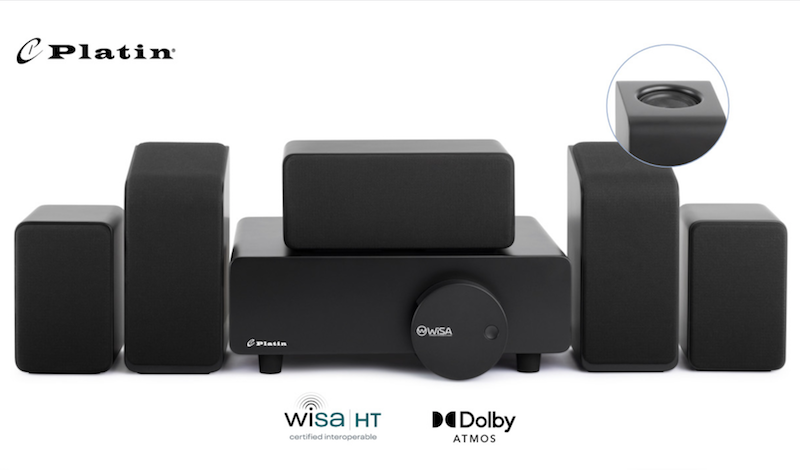Dolby Atmos technology has completely transformed the way we experience entertainment, by positioning sound in three-dimensional space and creating realistic, engaging, and immersive environments. The high-level multichannel audio format is now widely available in movies, TV shows, broadcast sporting events, and video games and from venues such as movie theaters, home theaters, and even cars.
Today, there are nearly 500 feature films available in Dolby Atmos. Considering the immersive audio benefits of Dolby Atmos sound, we can predict that a very high percentage of new movies will utilize this technology moving forward. By 2022, more than 10,000 professional movie theaters were Dolby Atmos enabled, and most newly built and renovated theaters are expected to embrace the technology. Additionally, most popular TV series are being released in Dolby Atmos, such as House of the Dragon, Wednesday, The Crown, Jack Ryan, The Mandalorian, Lord of the Rings: The Rings of Power, Ted Lasso, and Stranger Things.
This massive amount of Dolby Atmos content is creating a huge opportunity for emerging and stalwart consumer electronics brands to create multichannel capable systems so consumers can bring these immersive and realistic sound environments into their homes.
Addressing Cost and Complexity
Cost and complexity are two challenges for consumers, especially younger generations, who want to deploy immersive surround sound like Dolby Atmos at home. With consumer electronics buying power swinging toward a new generation of buyers, it has become difficult for audio manufacturers to combine convenience and performance into an attractive, affordable package.
While Millennials represent the largest group of consumers and Baby Boomers have the most considerable buying power, Gen Z’s spending power is on the rise. According to a 2021 Bloomberg report, this generation has $360 billion in disposable income, more than double the estimate from the previous three years. However, the average that a consumer in each generation spends a year on electronics varies considerably. Baby Boomers spend an average of $6,600, Generation X spends an average of $4,800, Millennials spend an average of $1,000, and Generation Z spends an average of $700 per year on electronics. This means that many new systems can be found expensive and out of reach for many consumers.
As president of the WiSA (Wireless Audio and Speaker) Association, I have witnessed from an insider’s perspective how manufacturers of immersive wireless sound products are staying ahead of the curve by creating intelligent devices and next-generation home entertainment systems featuring Dolby Atmos.
In April 2021, WiSA and WiSA Association member Lithe Audio announced the WiSA Certified Pro Series, in-ceiling speaker. The Pro Series speaker, aimed firmly at the custom installation market and Atmos installations, represents WiSA’s first Atmos-certified speaker and is priced at £699.98.
In the fall of 2022, Platin Audio launched the first WiSA Certified Dolby Atmos system with the Platin Audio Monaco 5.1.2. This system includes up-firing speakers and the WISA SoundSend universal transmitter to create an affordable home cinema experience. It also addresses the issue of complexity for consumers. When the Platin Monaco 5.1.2 won the CE Pro product of the year, the editors mentioned that the system was “an excellent Goldilocks solution for a new, younger demographic wanting to dip their toes into the world of high-end audio without some of the high-end hassles.”
Earlier this year, WiSA debuted a new Dolby Atmos soundbar system platform for the first time at the Consumer Electronics Show in Las Vegas. The platform, powered by WiSA DS technology, is designed to allow WiSA member brands to create soundbar systems with four channels of up-firing Dolby Atmos sound at competitive retail price points.
WiSA DS is WiSA’s 4.1-channel wireless solution created primarily for the soundbar market. A very high-quality yet affordable wireless solution was needed in the soundbar market to supply audio to a subwoofer and rear channels with Dolby Atmos capability. WiSA answered the call with this new technology, and we will begin to see it implemented into products in the fall of 2023.
Recently, WiSA announced its first shipments of WiSA E development kits to leading audio brands developing multichannel audio systems. Using the 5GHz portion of the Wi-Fi band, WiSA E offers high-performance, high-quality wireless audio transmission and reception at an affordable price. A TV with WiSA E on board could communicate with a fully wireless Dolby Atmos speaker system without requiring additional wires, amplifiers, receivers, dongles, or adapters. Only the speakers are needed. WiSA E will launch in 2024 and offers eight channels with a roadmap to ten channels of high-quality audio allowing system configurations up to Dolby Atmos 5.1.4.
The future begs for setup processes that avoid physical connections and cables around the room while creating audio systems that fully realize the highly produced immersive audio landscapes in today’s content. A TV with WiSA E will be able to connect wirelessly to a WiSA E-enabled Dolby Atmos surround sound system; all you will need to do is plug the speakers into a power source. No speaker wires or additional adapters will be required. A complete setup could be set up in minutes instead of hours, enabling incredible audio experiences across multiple forms of media.
Bringing it Home
According to Statista, a leading market and consumer data provider, spending on consumer electronics is soaring and has increased by 20% since 2020. Consumer spending on traditional and emerging technologies reached $505 billion in 2022. Additionally, the “Dolby Atmos Soundbar Market” study states that the Global Dolby Atmos Soundbar market is anticipated to rise at a sizable rate between 2022 and 2028.
Growing demand in music, TV, gaming, and movies worldwide has directly and positively impacted the demand for Dolby Atmos. With increased demand comes increased market competition. Home technology brands must adapt to consumer preferences to remain ahead of the curve. They must innovate and create product offerings with the latest features, technologies, and capabilities while keeping up with the trends leading into the future. Hand in hand with the rising wave of simplified audio solutions is the increase of Dolby Atmos.
As Dolby Atmos becomes the standard audio format in multiple forms of entertainment, it clearly defines the new direction for how audio is captured and reproduced in home entertainment systems. Content creation, delivery, aggregation, access, and Dolby Atmos-capable sound systems are all merging. It has never been easier for consumers to be immersed in their favorite entertainment content right in their homes.








